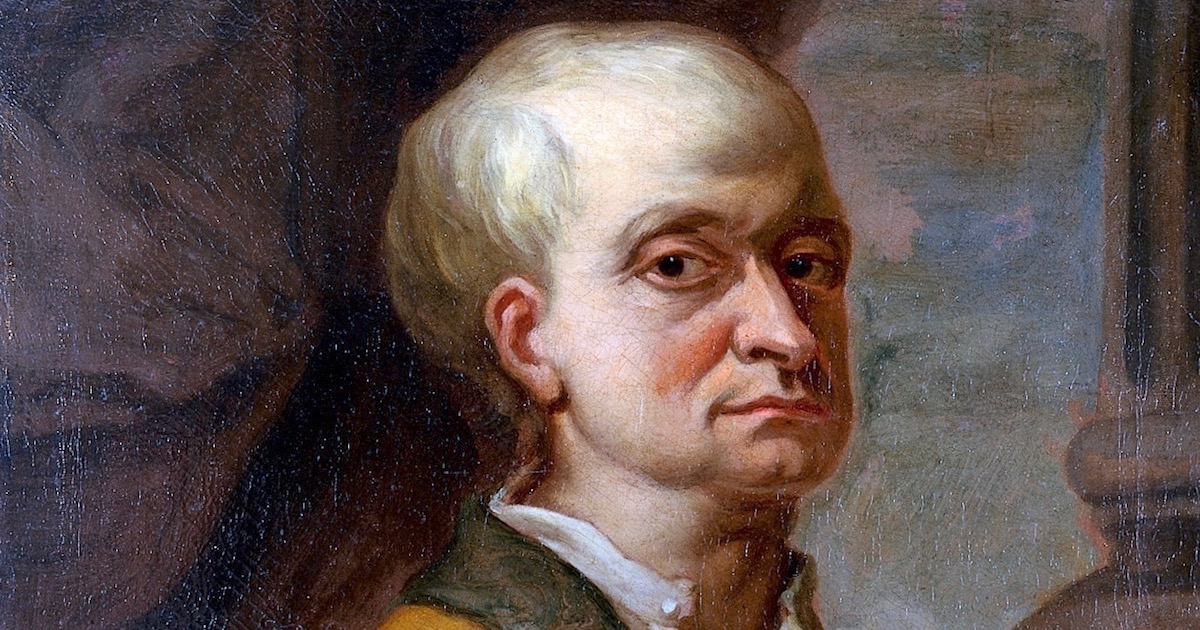 Physics, Earth & Space
Physics, Earth & Space
Knowledge, Power, and the Scientific Enlightenment


Philosopher Ed Feser has a brilliant review of Steven Pinker’s book Enlightenment Now. The entire review is superb, and Feser’s analysis of Pinker’s errors (and insights) is spot on. But I particularly like Feser’s synopsis of the classical Aristotelian understanding of cause and effect in nature and the implications for our understanding of nature and God brought by the radical philosophical changes of the Enlightenment.
Feser:
Here’s a capsule history of the transition from medieval Scholasticism to the Enlightenment. Following Aristotle, Scholastics like Thomas Aquinas held that a complete understanding of any natural phenomenon requires attention to each of its four causes. Consider a cat. There is its material cause, which is what it’s made out of — flesh, as opposed to the inorganic matter of which stones and dirt are composed. There is its formal cause, which is its nature or essence — felinity, with all the catlike qualities and behaviors that that entails. There is its efficient cause, which is what brought it into existence — its parents. And there is its final cause, the battery of ends or goals toward which it tends — chasing mice, making other cats, and so on.
Of course, there is more to the story. What exactly distinguishes flesh from other kinds of matter? What exactly is the mechanism by which cats make new cats? These questions too require answers, but finding those answers will entail identifying further causes of each of the four kinds referred to. How do we determine these causes? Through observation, naturally. It is through our experience of cats that we know that they come from other cats, that they tend to seek out mice, and so forth.
The Four Causes
The Aristotelian four causes are, as Feser notes, necessary for a complete description of nature. Of course, ordinarily we do not invoke all four causes to explain everyday phenomenon. If we want to know what metal a coin is made of (material cause), we need not investigate the ultimate purpose for coinage in our economy (final cause). If we want to know who ate the last cupcake (efficient cause), we need not know the physiological details of the culprit’s hunger (formal cause). We can be parsimonious in our understanding of nature, according to our practical needs. But to completely understand anything in nature, we need to understand all four causes.
Feser:
Didn’t God play a role? Yes, but not in the crude way New Atheists like Richard Dawkins or Sam Harris would suppose. “God did it” was not the Scholastics’ preferred mode of explanation. Nature’s relationship to God was seen as analogous to a story’s relationship to its author. The story as a whole wouldn’t exist in the first place if there were no author. But to understand the characters, events, and other details of the story, you can just focus on the story itself without constantly asking what the author had in mind. Similarly, though the natural world would not exist without God, you needn’t keep asking yourself what God intended in order to know a thing’s material, formal, efficient, and final causes. You can just study the things themselves.
Medieval thinkers like Aquinas were Big Picture men. They wanted to know the natures of things, and the ends toward which they aim. Hence, formal and final causes got most of their attention. Material and efficient causes, the specific physical mechanisms by means of which a thing realizes the ends set for it by its nature, were of secondary importance. But even the formal and final causes of natural phenomena were ultimately of less interest to the Scholastics than the divine cause of there being any natural world in the first place. Knowing even the most profound details of the story of nature couldn’t compare to knowing its Author.
God is the necessary primary cause of all that exists, but we may study nature quite adequately by focusing on specific secondary causes. The adequacy and success of the scientific understanding of secondary causes (material, formal, efficient, and final) does not mean that God’s primary causation is non-existent. It merely means that reference to primary causation, in some circumstances (like routine scientific investigation), is not necessary to the purposes at hand. That God and primary causation exist has been demonstrated with great rigor by a host of philosophers, from Aristotle to Maimonides to Aquinas to Leibnitz to Plantinga. But science can ordinarily be done quite well without reference to God or primary causation.
Primary Causation
However, merely because inference to primary cause can be stipulated to be unnecessary to ordinary science does not mean that primary causation has been demonstrated to be non-existent.
Feser:
The Enlightenment shifted these priorities, bringing the Small Picture into focus. Whereas the medievals sought to understand God so as to improve their souls, the Enlightenment was about understanding nature so as to improve our material conditions — to cure diseases, curb natural disasters, harness natural forces, develop new technologies, and so on. Such practical ends required discovery of the specific physical mechanisms by which natural phenomena operate, so that material and efficient causes would now take center stage, and formal and final causes would recede into the background.
Philosophers in the Enlightenment gradually inclined to mechanical explanations for nature, focusing on efficient and truncated material causes and casting aside formal and final causes. This did not mean that formal and final causes weren’t real. It meant that science, in certain circumstances, could more efficiently investigate nature by focusing on efficient and material causation. Newton’s mechanical view of nature had great influence, although his mechanism has been superseded by quantum mechanical and relativistic explanations, which are distinctly Aristotelian and non-mechanical in many fundamental ways. Subatomic particles exist in a superposition of potential states until observation (science foretold in Aristotle’s theory of potency and act and in Aquinas’ elaboration on the need for the agent intellect’s reduction of potency to act necessary for cognition). Science in the 21st century has cast aside much of the Enlightenment’s crude mechanism, and has remarkably confirmed the classical understanding of nature.
In particular, instead of identifying each natural thing’s distinctive essence, Enlightenment science would focus on the way all natural phenomena may be treated as variations on the same basic material stuff — unobservable particles in motion through space. Instead of identifying the distinctive ends or purposes toward which nature aims each thing, the focus would be on identifying the law-like ways in which certain configurations of particles served as the efficient causes of others.
Nature would thus be treated as a machine whose parts and their interactions may be described in an entirely quantitative way. The idea was that, to the extent that the world could be captured by such a mathematical and mechanical model, it could be better predicted and controlled, and the practical aims of the Enlightenment thereby realized. For the Scholastic philosopher, knowledge was about wisdom: understanding and respecting the natures and purposes of things. For fathers of modern science like Francis Bacon and René Descartes, knowledge would be about power: the mastery of nature so as to make it serve our purposes.
Knowledge as Power
Feser gets to the heart of the shift in perspective in the Scientific Enlightenment. Aristotle and the classical philosophers were interested in wisdom about causes in nature — they were interested in understanding the Big Picture, and about questions of ultimate cause. The Enlightenment philosophers and modern scientists are more interested in power over nature, and thus a focus on material and efficient causes (mechanical causes) suits their purposes.
A focus on power, to the neglect of wisdom, is fine, as long as it is recognized that mechanical philosophy is incomplete, and is merely a tool used for understanding some natural phenomena in a restricted sense. If you are trying to predict the course of a cannonball, Newtonian mechanics are adequate. If you are trying to understand the mind of the guy who fired the cannon, or if you are trying to understand the quantum states of electrons in the gunpowder or the moral status of war or the cause of the Big Bang, you need to look much deeper than mere mechanics.
A comprehensive understanding of nature entails an understanding of primary causation and of secondary causation, which entails material, formal, efficient, and final causation. Shortcuts — mechanical explanations — are fine for some purposes, but the Enlightenment philosophers and modern scientists of a materialist bent make a fundamental error when they mistake their mere shortcut for a comprehensive understanding of nature and of nature’s Source.
Image: Isaac Newton, via Wikimedia Commons.
